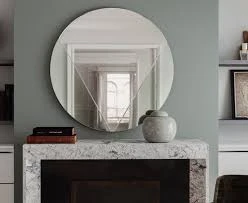

Understanding Low-E2 Glass A Sustainable Choice for Modern Buildings
In recent years, as environmental concerns continue to rise, the building industry has sought to adopt more sustainable practices and materials. One such innovation that stands out is Low-E2 glass. This advanced glazing technology offers significant benefits in energy efficiency, comfort, and aesthetic appeal, making it an increasingly popular choice for both residential and commercial applications.
What is Low-E2 Glass?
Low-E2 glass is a type of insulated glass that features a microscopically thin, transparent coating. This layer is designed to reflect certain wavelengths of light while allowing others to pass through. Specifically, Low-E2 glass is engineered to minimize the amount of ultraviolet (UV) and infrared (IR) light that enters a building while permitting visible light to shine through. This balance ensures that the interiors remain bright and inviting without compromising temperature control.
Energy Efficiency Benefits
One of the primary advantages of Low-E2 glass is its energy efficiency. By reducing heat transfer, this glass helps maintain a stable indoor temperature. In colder climates, it reflects indoor heat back into the room, reducing the need for heating systems. Conversely, in warmer climates, it blocks excessive heat from the sun, thereby lessening the reliance on air conditioning. According to various studies, buildings equipped with Low-E2 glass can achieve considerable energy savings, potentially reducing energy costs by up to 30% or more.
Moreover, the use of Low-E2 glass is not only beneficial for individual buildings but also contributes to global environmental goals. By reducing energy consumption, it subsequently lowers greenhouse gas emissions associated with energy production. This aligns with the United Nations’ Sustainable Development Goals and promotes a more sustainable future for generations to come.
Enhancing Comfort

Comfort is a critical aspect of any living or working space, and Low-E2 glass plays a vital role in creating a pleasant environment. The ability to minimize heat gain and loss means that occupants are less likely to experience temperature fluctuations. Additionally, Low-E2 glass significantly reduces glare from direct sunlight, making it easier to work or relax indoors without the distraction of harsh light.
Furthermore, by blocking UV rays, this type of glass protects belongings like furniture, carpets, and artwork from fading caused by sunlight exposure. This preservation of interior aesthetics can have long-term benefits for homeowners and businesses alike.
Aesthetic Appeal
While performance is essential, the visual impact of Low-E2 glass should not be overlooked. Available in a variety of styles and finishes, it can enhance the architectural design of a building. Whether it’s a sleek modern facade or a more traditional look, Low-E2 glass can blend seamlessly into a variety of design concepts. Its ability to allow natural light to enter while reducing glare ensures that spaces feel open and inviting.
Installation and Considerations
When considering the installation of Low-E2 glass, it is critical to work with professionals who understand the nuances of different glazing products. The effectiveness of Low-E2 glass can vary based on factors such as orientation, climate, and specific building requirements. Engaging with knowledgeable architects and contractors can help maximize the benefits of this innovative material.
Conclusion
Low-E2 glass represents an exciting advancement in building materials that combines energy efficiency, comfort, and design. As environmental awareness grows and the demand for sustainable solutions increases, Low-E2 glass stands as a beacon of innovation in the construction industry. Whether you are planning a new building or considering renovations, integrating Low-E2 glass can be an impactful decision that contributes to a healthier planet and enhances the quality of life for its occupants. Its wide range of benefits makes it a worthwhile investment for anyone looking to build for the future.